Our visit to Crater Lake (ooooh, aaaah) was the first time we were bludgeoned over the head by the explosive nature of the terrain we’d taken for granted since our departure from the ancient sea bottom currently known as Missouri. We’ve both lived most of our lives on what is called the North American Craton, According to Wikipedia, “A craton is an old and stable part of the continental lithosphere. Having often survived cycles of merging and rifting of continents, cratons are generally found in the interiors of tectonic plates.” Another way to think of a craton is “a place with no active volcanoes except around the edges.” Nan and I have grown up and lived all our lives in a land polished by glaciers and softened by sediment. The main geologic force at work in the land we’ve spent most of our lives in has been erosion. We haven’t had to get used to the harsh terrain found in much of the Pacific Northwest, terrain that in places resembles scabbed wounds in the earth. In Oregon, the wounds are still pretty raw.
Crater Lake was the “non-coastal” destination of our vacation from Bend and the Edmund, highly recommended by the folks at Beaver Coach. The crater is what’s left of Mount Mazama, destroyed by a volcanic eruption that occurred around 5,677 BC. It’s home to the Old Man of the Lake, a 30-foot log that’s been floating vertically in the lake since at least 1896. The lake water is so cold the log hasn’t decayed in over 100 years. Unfortunately, we didn’t know about the Old Man when we were there so we didn’t look for it.
At 1,943 feet, Crater Lake is the deepest lake in the United States and the second deepest in North America. There are no rivers or streams entering the crater so all the water comes from rain and snowfall which accounts for the striking colors in the water. Evaporation means the total volume of water in the lake is completely replaced about every 250 years. It’s estimated that it took 720 years to fill the lake to its stable depth.
It’s still geothermally active. Most likely future activity will be confined within the crater, similar to the creation of the islands within the lake. But it could blow again, too.
This is Lava Butte, the cinder cone that first got our attention as we were returning to Bend after an outing. We set out to explore it after I’d recovered from the Medication Incident. It’s part of the Newberry National Volcanic Monument. Our National Park Annual Pass got us in for “free.” The pass has been one of the best investments we’ve made so far. We’ve used it at Crater Lake and at Newberry multiple times so far.
Parking is extremely limited on Lava Butte, so in order to go to the top you have to get a 15 minute pass when you enter the Newberry Monument gate. If you exceed your 15 minutes, you are thrown into a volcano. Getting there involves a wild drive up a spiral road. The peak of the cone is a saucer-shaped bowel. It’s believed that Lava Butte is about 7,000 years old.
There are over 400 cinder cones in the Bend area. There was even one, Pilot Butte, visible from the Beaver Coach service parking lot, though we didn’t appreciate what it was until we went to Newberry. It also has a steep spiral road to the top.
Look! We can see our house from the top of Pilot Butte!
There are several lava fields in the Newberry National Volcanic Monument. We visited a place called the Lava Cast Forest. The lava we’re standing on is approximately 7,000 years old. It all flowed from the volcanic caldera visible on the horizon, about five miles away.
You’re looking at 7,000 years of biological recovery.
It’s taken 7,000 years for this Indian Paintbrush to take root here.
When the lava rolled out, it engulfed the trees in this part of the forest. The trees burned away, leaving their impressions in the cooled lava.
The tree-covered hill on the far side of the lava flow gives you an idea of what the area under the flow looked like 7,000 years ago. It’s interesting to me that the hill is actually a much older lava flow that has aged to the point where it can support a forest. This whole region is made up of layers of lava. The Newberry Volcano has been erupting for over 500,000 years, depositing layer after layer.
The most recent activity at Newberry is the Big Obsidian Flow, created 1,300 years ago. It covers 700 acres.
The nature of the eruption resulted in the creation of obsidian instead of the more common types of lava that look, well, more like rock. Obsidian looks like pulled taffy and is, essentially, glass. Hiking the Big Obsidian Flow is like walking a mile on crushed glass. Sandals and pets are not recommended.
Obsidian fractures easily into extremely sharp edges, sharper than a razor, and has been used as a tool by human types since before we were Homo Sapiens, all the way back to Homo Erectus. Fans of the Game of Thrones universe will also recognize it as the material that is so effective against the Others.
Nature is trying to make a comeback here, too.
Progress is slow.
This was the largest growth on the obsidian flow trail. The tree was only about five or six feet tall.
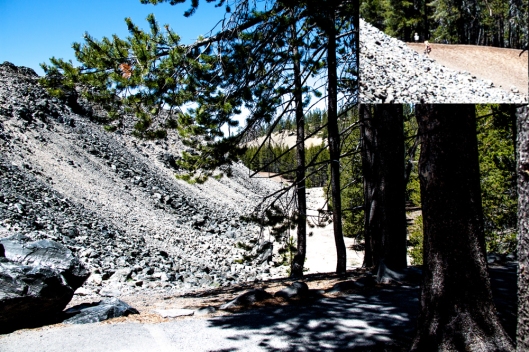 One last shot of the Big Obsidian Flow to give it some perspective. The enlarged section in the upper right of the picture shows two adults hiking around the base of the flow. The flow looks easily over 100 feet deep at this point.
One last shot of the Big Obsidian Flow to give it some perspective. The enlarged section in the upper right of the picture shows two adults hiking around the base of the flow. The flow looks easily over 100 feet deep at this point.
I’ve lavished a lot of time on lava in this post, but I became obsessed with the Newberry Monument and what it revealed about the entire region. The cataclysmic eruption that created the Crater Lake we know today was going on around the same time as the lava flows and cinder cones were being vomited up by the Newberry Volcano. And the city of Bend is right on the edge. While we’re not going to let that prevent us from returning next year for routine maintenance, I do get a little frisson of excitement knowing that I’m dancing on the rim of a volcano, so to speak.
I suggested to the good folks at Beaver Coach Sales and Service that one possible civic slogan for the city would be, “Bend: Pompeii of the Future!” The suggestion didn’t go over well.
Next, On the Road to Glacier National Park

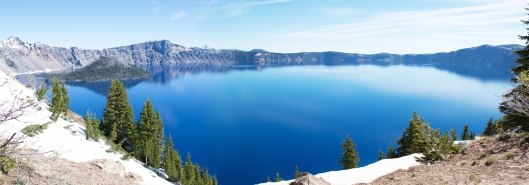
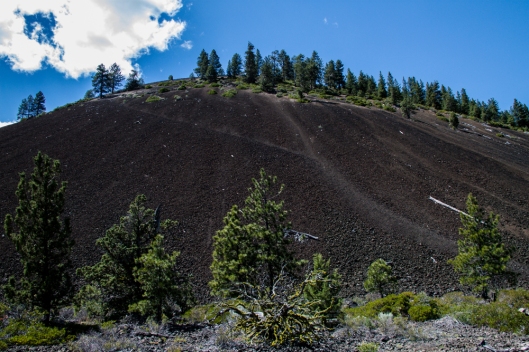
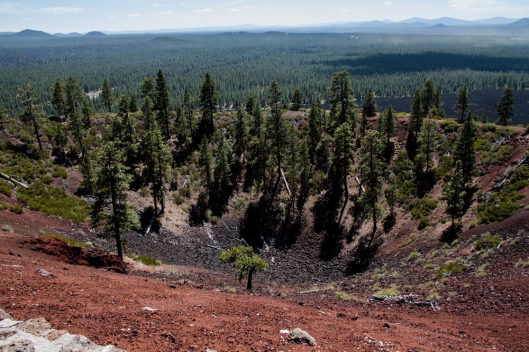
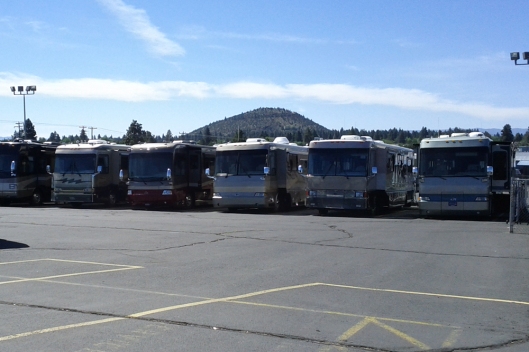
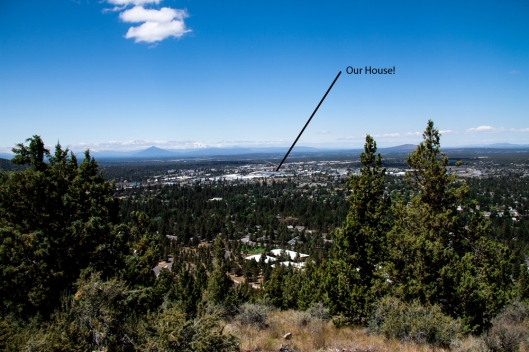
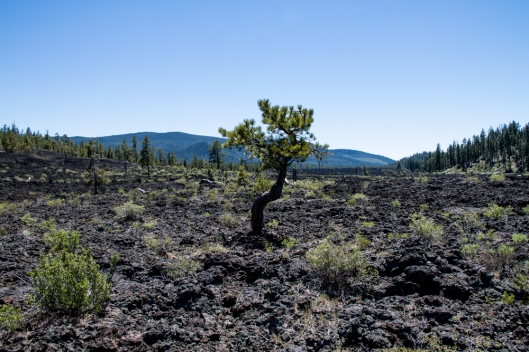
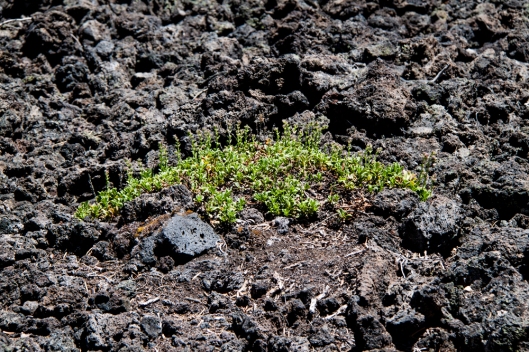
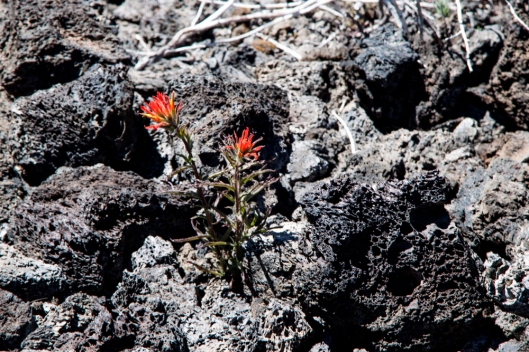
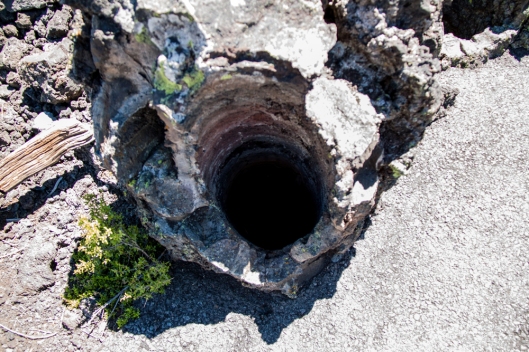
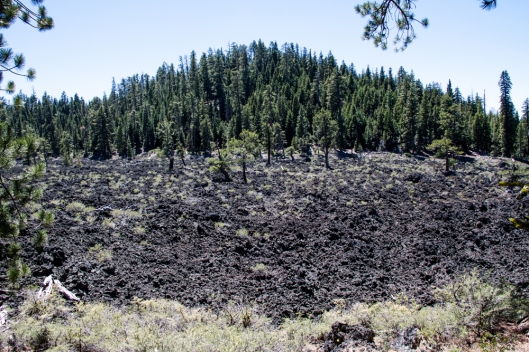
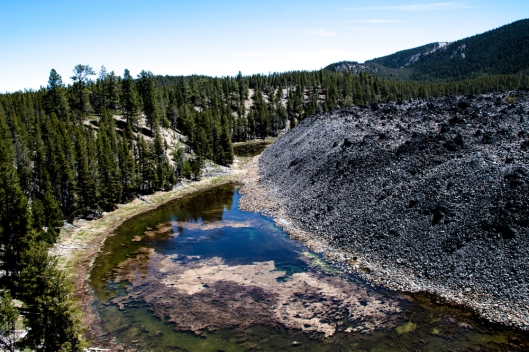
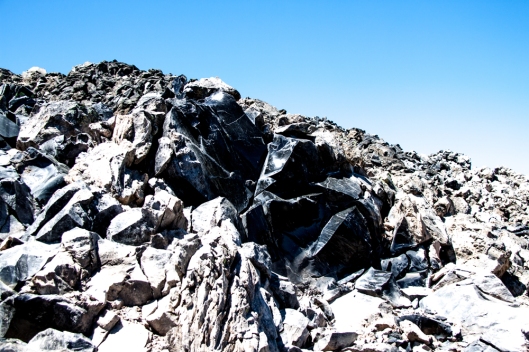
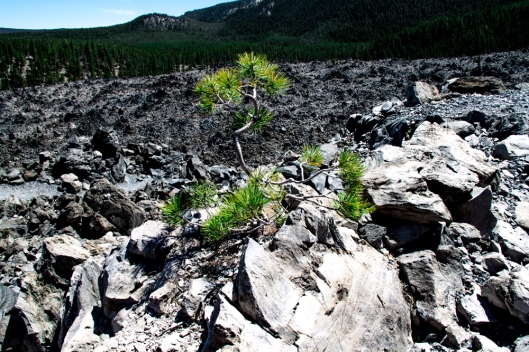
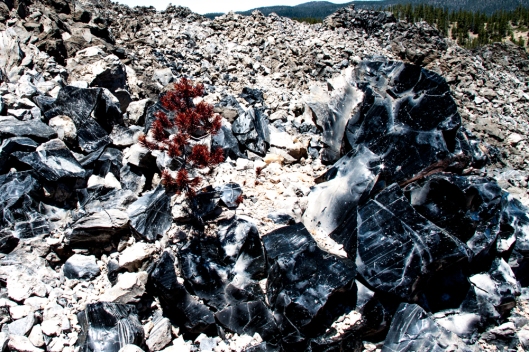
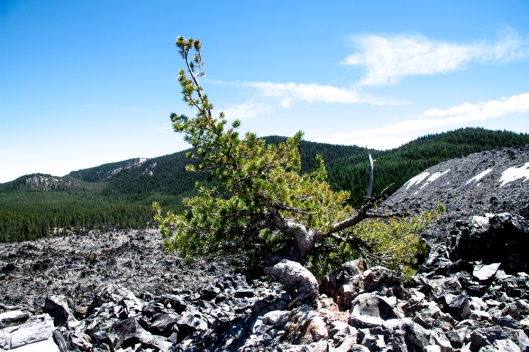
Fascinating! Thank you for sharing this experience. LOVE YOU GUYS!!!!!
Bend: Pompeii of the Future! U slay me, man.